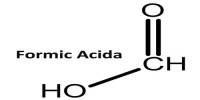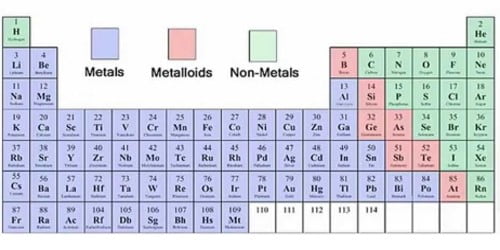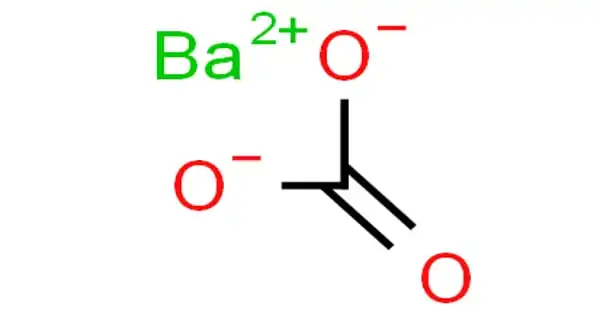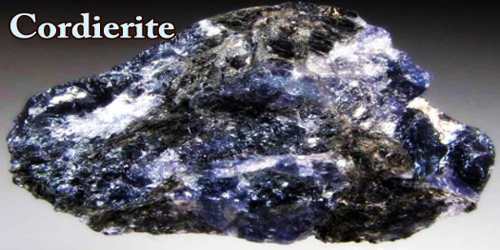Nickel(II) titanate is a chemical compound with the formula NiTiO3. Nickel(II) titanate, also known as nickel-titanium oxide, is a coordination compound composed of the ions nickel(II), titanium(IV), and oxide. It appears to be a yellow powder. Nickel(II) titanate can be synthesized in a variety of ways. The first method involves a melting temperature of over 500 °C for nickel(II) titanate, at which its precursor decomposes to give nickel(II) titanate as a residue.
Toluene oxidation has been aided by the use of nickel(II) titanate as a catalyst. The second method involved using the reaction’s enthalpy and entropy to synthesize nickel(II) titanate through its phase transition.
Properties
- Molecular Weight: 154.558
- Appearance: brown crystals
- Melting Point: N/A
- Boiling Point: N/A
- Density: 5.00 g/cm3
- Solubility in H2O: N/A
Molecular and crystal structure
Nickel(II) titanate crystallizes at 600 °C and is stable in an ilmenite structure with rhombohedral R3 symmetry at room temperature and normal pressure. Nickel(II) titanate has a rhombohedral structure with Ni and Ti layers alternating along the rhombohedral axis and O layers between them. With its rhombohedral symmetry, the XRD data supports the ilmenite structure of nickel(II) titanate. Other descriptions of the Illemite structure of nickel(II) titanite include a pseudo-close-packed hexagonal array of O2– ions with two-thirds occupied by an ordered hexagonal-like cation. X-ray power intensities were used to determine the structure.
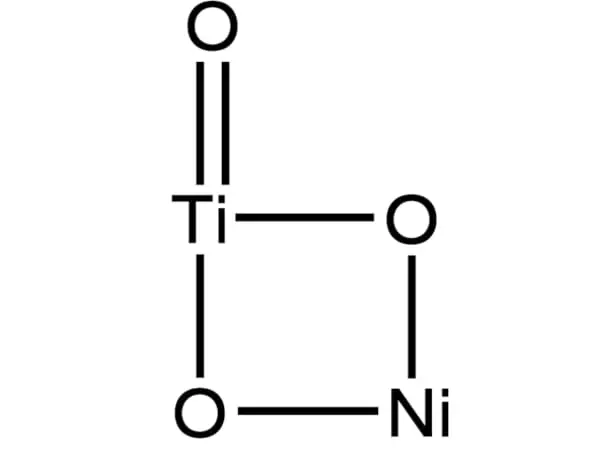
Synthesis
Nickel(II) titanate was synthesized using the polymeric precursor method. This involved spontaneous combustion of Ti(OCH(CH3)2)4 with Ni(NO3)2·6H2O and C3H7NO2 in a molar ratio of 1:1:20 in an isopropyl alcohol solution. The product of nickel(II) titanate was calcinated from the precursor at 600 °C for 3 hours.
Nickel(II) titanate was also formed by heating NiO and TiO2 at 1350 °C for three hours. Then it was then cooled until room temperature.
NiO + TiO2 + (heat) → NiTiO3
Applications
Because of its brilliant yellow color and high UV-vis-NIR reflectance, nickel(II) titanate has the potential to be used as a pigment in building coatings. Because of their high static dielectric constants, weak magnetism, and semiconductivity, ilmenite-type NiTiO3 is well known as a functional inorganic material with wide application in electronic materials such as electrodes of solid fuel cells, gas sensors, chemical catalysts, and so on.
Because of its absorption bands, NiTiO3 as a semiconductor has excellent catalytic activity. The band structures and density of states analysis indicate that nickel(II) titanate has enormous potential in the areas of high-density data storage, gas sensor data, and integration in circuit devices. NiTiO3 has even been used as a catalyst in the oxidation of toluene. Other uses for nickel(II) titanate have yet to be discovered.

